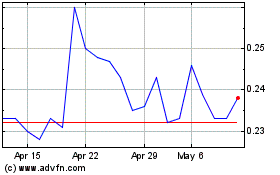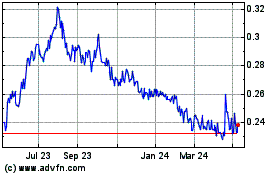By Tom Fairless
SOLINGEN, Germany -- Zwilling JA Henckels, a 300-year-old
knife-making company based in this ancient city of swordsmiths, had
much in common with Italy's Bialetti Industrie SpA.
Both are family-owned companies that produce signature cooking
tools -- knives for Zwilling and, for Bialetti, a whistling
stovetop coffeepot. Both diversified into a range of cooking
products in recent decades and entered international markets with a
network of stores.
Then the euro came along 20 years ago, binding Germany and Italy
more tightly into Europe's giant single market. And the fortunes of
the two companies started to diverge.
Over the past decade, Zwilling has more than tripled revenue to
EUR700 million (about $800 million) -- while Bialetti's sales have
fallen 20%, from a similar starting point of around EUR200 million.
In October, Bialetti said it had agreed to a debt-restructuring
deal that will hand an equity stake to Och-Ziff Capital Management,
the New York-based hedge fund.
The shifting paths of the two companies reflect a broader
divergence between Germany and Italy -- original euro members and
the bloc's biggest and third-biggest economies -- since the turn of
the century.
Germany's economy has grown 31% since the euro's creation,
Italy's 7%. Residents of Piedmont, the northern Italian region
where Bialetti was founded, were until recently richer than their
German counterparts in North-Rhine Westphalia, where Zwilling is
based. Today, the opposite is true. Household incomes in
North-Rhine Westphalia have risen by 18% since 2007, to EUR25,700
per inhabitant, while in Piedmont incomes have fallen by 5%, to
EUR21,300 per inhabitant, according to the European Union's
statistics agency.
That widening gap is complicating efforts by the European
Central Bank to phase out stimulus policies: The further countries
are from the eurozone average, the less likely that the ECB's
common strategy will suit them. At worst, it threatens the future
of the currency union, once billed as an engine of economic
convergence.
It wasn't supposed to be this way. The creation of the euro in
January 1999 was expected to raise productivity and living
standards in weaker economies like Spain and Italy, as capital and
trade flowed more easily across the region's internal borders.
Economic fluctuations would fade as countries were forced to
adhere to the same budget rules as Germany. Sharing a common
currency meant countries in Southern Europe couldn't devalue
national currencies to gain a competitive edge. They would have to
become more efficient.
In short, the euro was supposed to create smaller versions of
Germany throughout Europe.
Twenty years on, the euro has been a boon to Germany by creating
a big market using a currency weaker than the deutsche mark was,
helping it export to markets like China. Worker productivity has
increased almost 20% over the period, as German companies invested
heavily in training and new technologies.
But the productivity of Italian workers has flatlined, according
to data from the Organization for Economic Cooperation and
Development, and exports haven't grown at the same pace as
Germany's. Other Southern European nations like Greece and Portugal
have also diverged economically from Germany since 1999, although
not as dramatically as Italy, according to data from the
International Monetary Fund.
All of which means that the central bank has had to use stimulus
efforts to boost economies across Southern Europe.
"It was a mistake to communicate that each member of the
eurozone had a right to a certain GDP per capita," says Jean-Claude
Trichet, former president of the central bank and an architect of
the currency union. "That depends on the progress of
productivity."
Some economists and politicians blame Italy's stagnation on the
euro itself. While it cut borrowing costs for Italian authorities
and businesses, the euro also removed key economic levers from
national hands, including control over the exchange rate, which
made it harder for Italian companies to remain competitive
internationally.
Increasingly, though, economists argue that the fault lies with
Italian companies and institutions, which they say failed to
navigate the rocky transition to a digitized, globalized
economy.
"It was the failure of Italian enterprises to reorganize
themselves so as to capitalize on...new information technologies
that caused Italy to fall behind from the mid-1990s on," says Barry
Eichengreen, professor of economics at the University of
California, Berkeley.
Italy's family-owned companies, with close ties to banks and
politicians, were good at playing economic catch-up after World War
II. But by the 1990s, their approach of importing technologies
wasn't enough to keep up with an environment of rapid innovation
and change, says Mr. Eichengreen.
German businesses fared better in the increasingly competitive
environment, he says, perhaps because the shock of German
reunification in 1990 forced companies to alter inherited business
practices. For instance, they restrained wage growth to increase
their competitiveness internationally.
"I wouldn't put the euro high up on the list of things that have
created the Italian problem," says Mr. Eichengreen. A return to the
lira would help Italian companies to sell products more cheaply in
international markets, but the problem is, the companies aren't
making enough of the technologically advanced products that would
let them keep pace with top international competitors.
The economic picture was very different when Bialetti was
created. The early decades of the 20th century were a thriving time
for cookware companies in the company's home region, 60 miles
northeast of Turin.
In 1933, company founder Alfredo Bialetti invented an octagonal
coffee pot, known as a moka, which whistles on the stove like a
teapot. The product became enormously popular in Italy. Mr.
Bialetti's firm later merged with a family-run maker of aluminum
pans, Rondine, and listed on the Italian stock exchange in
2007.
Since then, though, Bialetti Industrie has racked up more than
EUR40 million in losses.
The company invested in a chain of retail stores in Italy and
nearby countries in recent years, roughly doubling its staff
numbers. But the bet hasn't paid off. The company attributed a EUR5
million net loss in 2017 in part to difficulties at its stores in
France, Spain and Austria, which necessitated "the partial
write-down of investments in the two-year period 2016-2017,"
according to the company's annual report.
To save costs, Bialetti closed a factory in Omegna in 2010,
which had employed about 120 workers, and outsourced production to
Romania. It wasn't the only company to do so. The town once had
five big cookware firms, but only two remain, says Charles Hubert
de Montbel, managing director of one of the survivors,
Lagostina.
"Omegna is clearly in crisis," he says.
A spokeswoman for Bialetti declined to comment on the company's
performance. She said the company would use EUR40 million in funds
from Och-Ziff to support a three-year business plan, with a focus
on its recently created coffee-capsules business.
Zwilling's operation stands in contrast to Bialetti's. For one,
the knife maker has kept key manufacturing processes close to home.
In a factory at the company's headquarters in Solingen, on the
outskirts of the Ruhr industrial district, the company produces
knives for the U.S. market, which can retail for $100 to $500.
Dozens of orange robotic arms dance and stamp, flitting through
intricate steps that turn sheet metal into knives. Two workers on
the factory floor keep an eye out for any malfunction.
Automation and other technology have given the company a boost
and helped it succeed in recent decades, says Zwilling board member
René Schmitz, and the automation hasn't meant big layoffs because
jobs opened up in new fields as the business grew. The company
employs around 30 engineers in Solingen who develop robotized
production cells, new products and new technologies, he says.
Manual workers create handcrafted specialty knives that can sell
for more than EUR1,700 each.
While Bialetti has had problems outside of Italy, Zwilling has
thrived. Almost 90% of Zwilling's revenue is generated overseas.
China is its biggest market, followed by the U.S.
Bialetti has tried to increase sales in China and the U.S. by
signing new commercial partnerships in those markets in 2014. In
2017, its sales outside Europe were only EUR11 million, or 6% of
its total.
The company now plans to focus on its higher-margin coffee
business. Its sales of ground coffee capsules rose by 13% in the
first half of 2018, taking fourth position in Italy in the capsule
segment, a spokeswoman says.
Mr. Fairless is a Wall Street Journal reporter in Germany. Email
him at tom.fairless@wsj.com.
(END) Dow Jones Newswires
January 20, 2019 09:37 ET (14:37 GMT)
Copyright (c) 2019 Dow Jones & Company, Inc.
Bialetti Industrie (BIT:BIA)
Historical Stock Chart
From Jan 2025 to Feb 2025

Bialetti Industrie (BIT:BIA)
Historical Stock Chart
From Feb 2024 to Feb 2025
